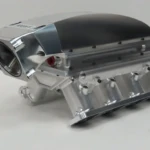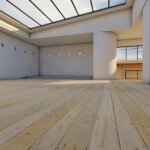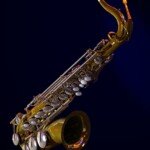Mastering Precision: A Deep Dive into Sheet Metal CNC Machining
Sheet metal fabrication is the backbone of countless industries, from towering aerospace panels to the electronic enclosures that power our daily lives. But achieving the precision, sophistication and reliability required today requires more than just scissors and hammer skills. Enter CNC (computer numerical control) machiningthe technological force that is changing the way we shape metal. This guide demystifies the process, explores its transformative benefits, and details why choosing the right partner, like GreatLight, is critical.
Beyond the Blueprint: What is Sheet Metal CNC Machining?
The core of sheet metal CNC machining involves computer-controlled equipment that performs high-precision manufacturing tasks based on digital designs (CAD/CAM files). Unlike manual operations, CNC eliminates human error and inconsistency. Key machines include:
- CNC laser cutting machine: High-power lasers vaporize metal with incredible precision, handling complex contours and internal cuts with negligible thermal distortion.
- CNC turret punch: They utilize a variety of punch and die sets to quickly create holes, slots, louvers and simple shapes in sheet metal.
- CNC bending machine: Programmable hydraulics or motors use custom tools to bend sheet metal to precise angles and radii.
- Advanced five-axis solution: (GreatLight’s specialty) Machines that manipulate sheet metal or tooling along five synchronized axes, enabling complex 3D forming, angle cutting and multi-sided milling/drilling in a single setup, eliminating costly repositioning and improving accuracy on complex parts.
CNC Sheet Metal Workflow: From Details to Brilliance
- Design and Engineering (CAD): Engineers create detailed 3D models outlining dimensions, bend allowances, tolerances and features.
- Programming (CAM): CAD data is converted into machine code (e.g., G-code) that specifies each tool path, cutting speed, punch sequence, or bend angle.
- Machine settings: Technicians load the correct sheet, install the necessary tooling (laser optics, punches/dies, bending tools), and then load the program.
- Automated manufacturing: CNC machines carry out procedures precisely – cutting, punching, bending or milling parts.
- Secondary operation: Parts may undergo deburring, tapping, welding (often robotic), or surface treatment (powder coating, anodizing, plating).
- Strict inspection: Advanced metrology tools (coordinate measuring machines, optical scanners) verify all dimensions and tolerances against the original design.
Why CNC dominates sheet metal
The shift to CNC is not just trend-driven; It delivers tangible, game-changing benefits:
- Unparalleled precision and consistency: Achieve tolerances as tight as ±0.001" (0.025mm), ensuring every part is identical – critical for interchangeability and assembly.
- Complex geometry made simple: Create complex designs, sharp internal corners, micro tabs, countersunk holes and complex 3D contours that are impossible to achieve with manual methods. Five-axis functionality takes this even further.
- Speed and efficiency: Automatic tool changes, optimized cutting paths and high-speed operation significantly reduce cycle times compared to manual manufacturing.
- Cost effectiveness: Reduced material waste (optimized nesting), reduced labor costs, reduced rework, and suitability for prototypes and high volumes make CNC a smart financial choice in the long term.
- flexibility: Rapid program changes allow for quick switching between different sections, easily adapting to design iterations.
- Excellent material handling: CNC systems are capable of consistently processing strong and challenging materials such as titanium, hardened stainless steel or high-grade aluminum alloys.
CNC sheet metal shapes our world
The range of applications is wide and crucial:
- aerospace: Lightweight structural components, complex engine parts, avionics enclosures.
- car: Chassis elements, complex brackets, custom casings, prototype body parts.
- Medical: Sterile equipment housings, surgical instrument components, imaging equipment components.
- Electronics and Telecommunications: Server racks, cabinets (EMI/RFI shielded), heat sinks, connectors.
- Industrial machinery: Frames, guards, panels, conveyor components.
- consumer goods: Appliances, lighting, architectural elements.
Choose your CNC sheet metal partner: Why GreatLight?
As manufacturing complexity increases, working with experts is no longer optional but strategic. huge light As the premier five-axis CNC machining manufacturer:
- Five-axis capability: We go beyond basic cutting and bending. Our advanced Five-axis CNC machining center Perform complex multi-directional milling, drilling and profiling operations directly on sheet metal. This enables unparalleled design freedom, eliminates secondary operations, ensures tighter tolerances on angular features, and significantly reduces lead times. Complex parts are our specialty.
- Cutting-edge technology platform: We invest in the latest German and Japanese CNC machinery to ensure optimal performance, precision and efficiency for even the most demanding projects.
- Material mastery: We specialize in machining a variety of materials—stainless steel, aluminum (including aerospace grade), copper alloys, titanium, and specialty metals—understanding the nuances of each material for optimal results.
- A true one-stop solution: From initial CAD review and material procurement to precision machining and Comprehensive post-processing (precision grinding, heat treatment, surface treatment, assembly), Honglai one-stop processing. Simplify your supply chain.
- Engineering-driven partnerships: Our team is more than just operators; we are manufacturing engineers. We actively engage in design for manufacturability (DFM) collaboration to optimize part cost, performance and manufacturability from the start.
- The combination of speed and value: Leverage our efficient operations and technical expertise to achieve industry-leading delivery times without sacrificing quality at competitive, transparent prices.
in conclusion
Sheet metal CNC machining represents the pinnacle of precision manufacturing. Its ability to transform digital designs into high-performance, complex metal parts with unwavering precision and efficiency is irreplaceable in modern manufacturing. Whether developing a groundbreaking prototype or manufacturing at scale, choosing a partner equipped with advanced technologies like five-axis capabilities and deep engineering acumen is critical. Gretel embodies this commitment. We offer more than just CNC machining; we offer comprehensive, precision-engineered sheet metal solutions, backed by advanced technology and committed to exceeding expectations. Contact us today to experience how our five-axis expertise can enhance your next project and deliver custom precision parts at the best value.
CNC Sheet Metal Processing: Frequently Asked Questions (FAQ)
Question 1: How tight can CNC sheet metal tolerances actually be?
A: While theoretically achievable in the micron range in the laboratory, real-world sheet metal production typically has:
- Laser cutting: ±0.005" (0.127mm) or better profile features.
- CNC punching: ±0.002" to ±0.005" (0.05mm – 0.127mm) depending on hole size and material.
- CNC bending: The general angle is ±0.5° to ±0.1°, ±0.002" Each bent leg size (affected by springback). Five-axis milling Tighter tolerances can be achieved on flat surfaces (< ±0.001" / 0.025mm) key features. Provide your critical dimensions and tolerances to your supplier, such as GreatLight, for evaluation based on geometry and volume production feasibility.
Q2: Can CNC processing process complex, multi-curved sheet metal objects?
Answer: Of course. CNC press brakes equipped with precision molds excel at multiple, closely placed bends. A real game changer extreme The complexity is Five-axis machining. It allows adding features (holes, slots, pockets, contour edges) back On curved or high-profile sections in a single clamping, conventional rotation between operations can introduce errors. This is critical for complex parts such as aerospace brackets or complex housings.
Q3: What is the most cost-effective material for CNC sheet metal projects?
A: Cold rolled steel (CRS) and aluminum (e.g. 5052-H32, 6061-T6) are often the most economical materials for prototyping and production due to their good machinability, strength and wide availability. But in terms of material selection must Driven by function (strength, weight, corrosion resistance, conductivity). Consult experts like GreatLight early – their materials experience and efficient processing (minimizing scrap) often make seemingly expensive alloys feasible.
Q4: Prototyping vs. mass production: How does CNC sheet metal bridge the gap?
Answer: This is the core advantage of CNC. The same digital files (CAD/CAM) drive both processes. For prototype:
- Quick Setup: Minimal programming adjustments required.
- Design flexibility: Easily incorporate last-minute changes.
- Lower batch costs: No expensive special tooling required (unlike stamping).
For production: - Scaling speed: Just run the optimized program repeatedly.
- Consistency: Automatic replication ensures quality.
- Efficient nesting: Maximize the utilization of each piece of material.
CNC provides a seamless transition from POC to full-scale manufacturing.
Q5: What finishing options are available after CNC machining and why are they needed?
A: Finishing enhances functionality and aesthetics:
- Deburring: Remove sharp edges on cut/bent parts (critical for safety and assembly).
- Grinding/Sanding: Achieve smoother surfaces or specific edge radii.
- Powder coating: Durable decorative layer with corrosion resistance in various colors/textures.
- Anodizing: Creates a hard, corrosion-resistant oxide layer on aluminum, available in a variety of colors.
- Electroplating (e.g. zinc, nickel): Enhanced corrosion resistance and specific surface properties.
- Laser marking: Engrave permanent part ID, logo or description.
GreatLight offers a full range of organizing services for a complete "Ready to assemble" part.
Q6: Why should I consider a five-axis specialist like GreatLight for my project?
Answer: In addition to general CNC workshops, Huileite also focuses on Advanced five-axis technology Directly address the limitations of 3-axis or separate machining:
- Complex one-part solution: Eliminate costly multi-step processing and potential misalignments.
- Shorten delivery time: Less setup = faster turnaround.
- Enhanced feature accuracy: Mill precision holes/cavities completely vertically on complex angles or surfaces.
- Wider design scope: promote innovation, previously "unmanufacturable" geometric shapes.
- Advanced prototyping: Practical testing of complex assembly fit and functionality.
If your parts have significant 3D complexity, true five-axis capability from an expert partner isn’t a luxury – it’s key to feasibility, performance and cost-effectiveness.









































